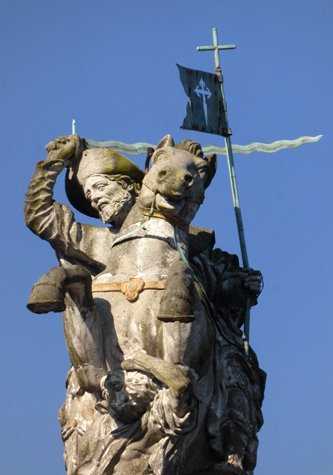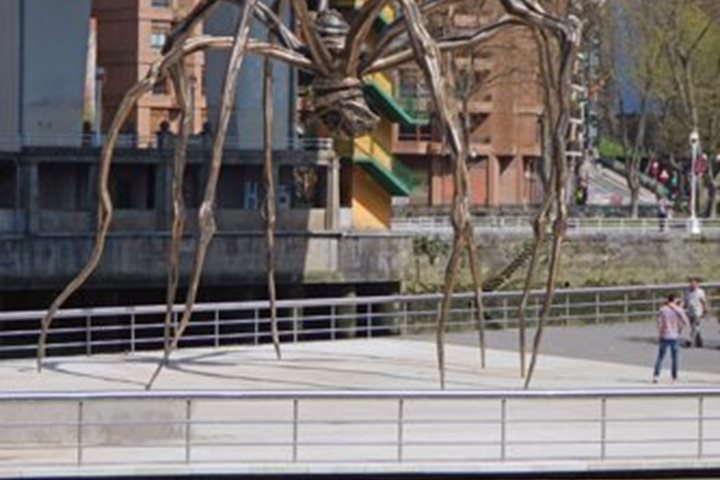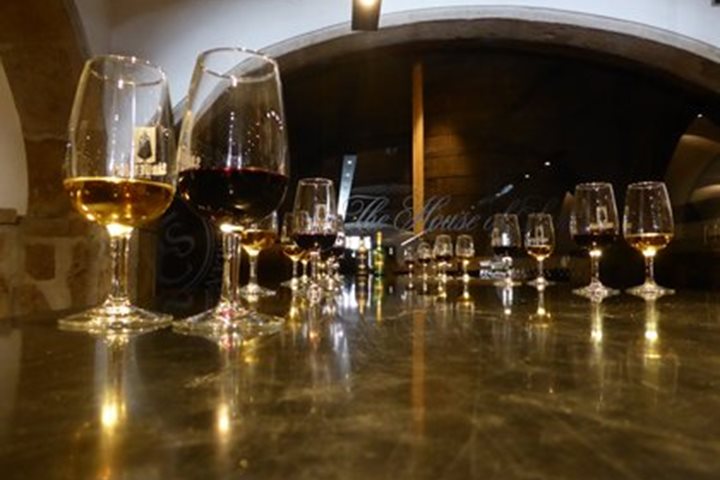This brochure title given to this voyage was most appropriate: “The Legacy of the Moors.” For close on a millennium, following the rapid expansion of Islam across North Africa in the late eighth century, the new religion held sway over the Iberian Peninsula, save for a small stretch of territory in the far north. We have visited Granada and Silves, in Spain and Portugal respectively, where Moorish rulers held court and we have learned of the many ways in which Islamic culture, precociously advanced in its time, has subsequently influenced European culture and economic development.
Today, in our visit to Santiago de Compostella, we visited the epicenter of the Reconquista, the fight-back by European Christendom to reclaim Iberia from Moorish control. It was a process that took centuries and was inspired by a vision of St James, patron saint of Spain, who appeared in a vision to one of the Christian knights. In Spain St James is known familiarly as Santiago Matamoros, St James the Slayer of the Moors. There is a somewhat politically incorrect (and emphatically anachronistic) sculpture of St James in one of the side chapels of the cathedral’s nave showing a white St James on a rearing white stallion beheading a black Moor with his saber. Last resting place of the nation’s patron saint who inspired the Reconquista, Santiago de Compostella early attracted pilgrims and achieved major status as a pilgrimage center in mediaeval Europe.
That pilgrimage tradition has undergone a recent revival: the pilgrimage routes that radiate out across the European continent are now well trodden by pilgrims seeking spiritual fulfillment as in days gone now joined by others happy to use the routes and their associated facilities as long-distance walking trails. On arrival in the great square before the cathedral’s west door in the early morning we witnessed a steady flow of emotionally-charged pilgrims arrived at their final destination. We were to meet them again after our morning tour of the cathedral and its associated buildings at the mid-day celebration of Mass when the names of the pilgrims and their countries of origin were read out before the swinging of the famous botafumeiro, a giant incense burner that once served to sweeten the air soured by the presence of a throng of unwashed pilgrims. The theatrical scene still manages to conjure up the mediaeval world, even if the nave is now illuminated with iPhones rather than candles.
Following mass we made our way to the Hostal de los Reyes Catolicos, the former hospice that was a gift of Ferdinand and Isabella to the city in the years after the fall of the Granada in 1492. It continued in use as a hospital until the 1950s but is now a five star parador, one of the network of historic hotels run by the Spanish government that have a mission to promote local gastronomy. There we had a traditional Galician meal, preceded by a colorful courtyard performance by a local dance troupe.
During the day our ship repositioned from the ria coastline at Muros where we disembarked in the early morning to the attractive fishing port of A Coruña, where we had time to view the Torre de Hercules lighthouse that lays debatable claim to be the oldest continuously functioning lighthouse in the world.








